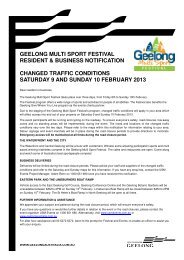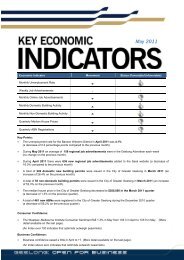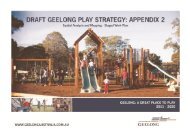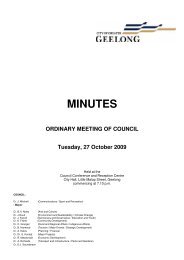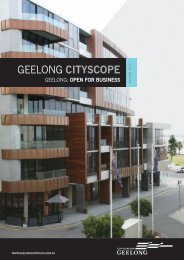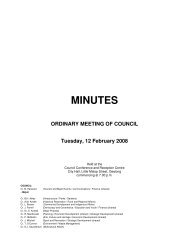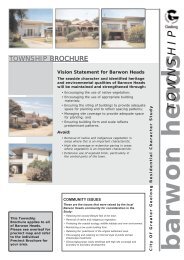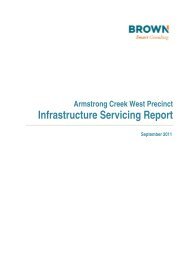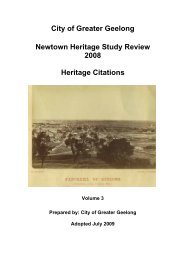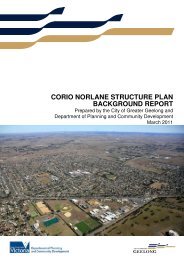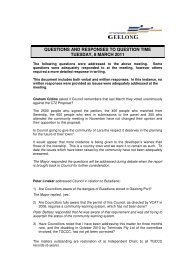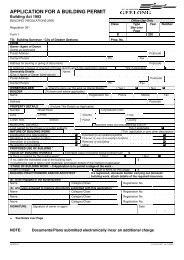AGENDA - City of Greater Geelong
AGENDA - City of Greater Geelong
AGENDA - City of Greater Geelong
You also want an ePaper? Increase the reach of your titles
YUMPU automatically turns print PDFs into web optimized ePapers that Google loves.
<strong>Greater</strong> <strong>Geelong</strong> <strong>City</strong> Council 28 August 2012<br />
Agenda for Ordinary Meeting<br />
SECTION B - REPORTS Page 22<br />
Seven (7) <strong>of</strong> the existing spaces are to be lost due to the proposed extension to the<br />
medical centre however an additional 15 spaces are to be constructed at the rear <strong>of</strong> 8<br />
Cox Road and 41 & 43 Georgia Grove.<br />
This provides a surplus <strong>of</strong> 8 car parking spaces which exceeds the requirement for an<br />
additional three (3) spaces per every other person providing health services above the<br />
first person providing health services.<br />
It is noted that the original application and subsequent amendments were assessed<br />
against the previous car parking rate <strong>of</strong> 5 spaces per practitioner.<br />
Bicycle Spaces<br />
Currently no bicycle parking spaces are provided on site.<br />
Subject to Clause 52.34 the rate for bicycle parking for employees is 1 space per 8<br />
practitioners therefore triggering a requirement <strong>of</strong> 2 spaces for the allowed 16<br />
practitioners.<br />
Subject to Clause 52.34 the rate for bicycle parking for visitors is 1 space per 4<br />
practitioners therefore triggering a requirement <strong>of</strong> 4 spaces for the allowed 16<br />
practitioners.<br />
In total six (6) bicycle spaces are required for the site and this will be required via an<br />
amended plans condition.<br />
State Planning Policy Framework<br />
Clause 13.02-1 - Floodplain Management<br />
The objective <strong>of</strong> Clause 13.02-1 <strong>of</strong> the State Planning Policy Framework is to assist the<br />
protection <strong>of</strong>:<br />
• Life, property and community infrastructure from flood hazard.<br />
• The natural flood carrying capacity <strong>of</strong> rivers, streams and floodways.<br />
• The flood storage function <strong>of</strong> floodplains and waterways.<br />
• Floodplain areas <strong>of</strong> environmental significance or <strong>of</strong> importance to river health.<br />
Strategies<br />
• Identify land affected by flooding, including floodway areas, as verified by the<br />
relevant floodplain management authority, in planning scheme maps. Land<br />
affected by flooding is land inundate by the 1 in 100 year flood event or as<br />
determined by the floodplain management authority.<br />
• Avoid intensifying the impacts <strong>of</strong> flooding through inappropriately located uses and<br />
developments.<br />
• Locate emergency and community facilities (including hospitals, ambulance<br />
stations, police stations, fire stations, residential aged care facilities,<br />
communication facilities, transport facilities, community shelters and schools)<br />
outside the 1 in 100 year floodplain and, where possible, at levels above the height <strong>of</strong><br />
the probable maximum flood.



